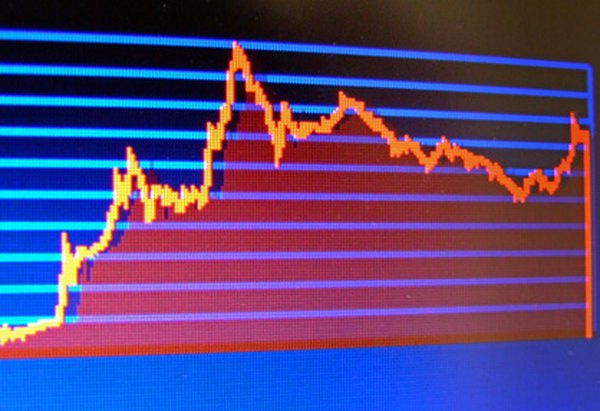How do I Find the Year to Date Return on a Mutual Fund?
The year-to-date return measures a mutual fund's recent returns.
stock market analysis screenshot image by .shock from Fotolia.com
Whether you’re invested in mutual funds or intend to invest in certain funds, you need to learn the year-to-date return. Every mutual fund prospectus warns that past returns are no indication of future results, but a fund’s past YTD return is a major factor for anyone looking to invest their money. You should investigate at least YTD returns of the prior three years, as well as the fund’s expense ratio when making an investment decision.
YTD Return
The YTD return for your mutual fund, or any investment involving securities, is the profit generated since the start of the year. The YTD return is among the easiest ways to assess the performance of any mutual fund or security. Don’t confuse the performance year to date with the performance yield to date. The latter involves the earnings the investment generates over a specific time period.
Year to Date Example
Figuring the YTD return requires three basic pieces of information: the fund price on the first trading day of the year, how many distributions the fund made over the course of the year and the fund’s current share price. Simply subtract the value of the share price when the year started from its present share price. For example, if the share price of XYZ Fund was $50 on the first trading day of the year and $60 on the last trading day in December, the share price increased by $10. To gauge the fund’s total return for the year, add the value of any distributions, such as dividends and capital gains, made during the past 12 months.
If the mutual fund distributions equaled $1 per share over the course of the year, add that to the share price increase. In this example, the total return per share is $11. Next, determine the rate of return. Do this by dividing the total return by the share price at the start of the year. In this case, you are dividing $11 by $50 to get the total return rate. The result is 0.22, or 22 percent.
That’s a great rate of return, but it can work in the other direction. Say the share price was $60 at the start of the year and finished the year at $50, with that same mutual fund distribution. Your mutual fund YTD return is down 15 percent.
YTD Returns on Portfolio
Mutual funds are companies pooling together money from many investors to invest in securities. While mutual funds are professionally managed, many mutual fund investors may put together their own portfolios through their brokerage accounts, often connected to mutual fund giants such as Fidelity or Vanguard. If the investor has a portfolio of 20 individual stocks, she can calculate the YTD return of each stock using the same method.
The same holds true for calculating the YTD return on the entire portfolio, with one difference. Rather than calculating the value of the share price at the start of the year, add up the total value of the portfolio as of that date. Then, add up the portfolio’s current value and subtract the amount from the beginning of the year.
Perhaps the portfolio was worth $100,000 in early January and is worth $108,000 in late December. Divide that $8,000 gain by 100,000 to achieve the YTD return on the portfolio of 8 percent. Think of it another way: For every $1 you had in your portfolio in January, you received 8 cents in profits for the year. If you own shares in a mutual fund with an investment portfolio similar to your own, compare how you stacked up with the professionals for the year.
References
Writer Bio
A graduate of New York University, Jane Meggitt's work has appeared in dozens of publications, including PocketSense, Financial Advisor, Sapling, nj.com and The Nest.

